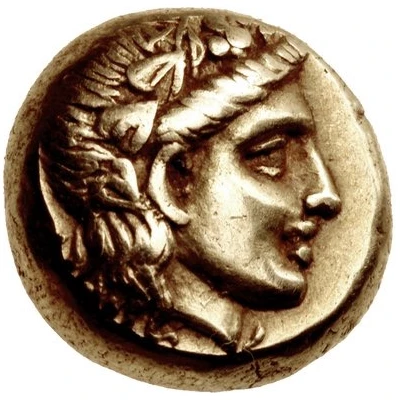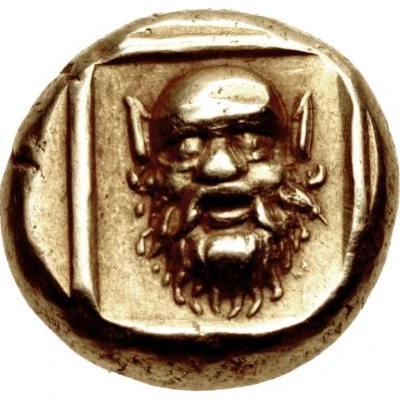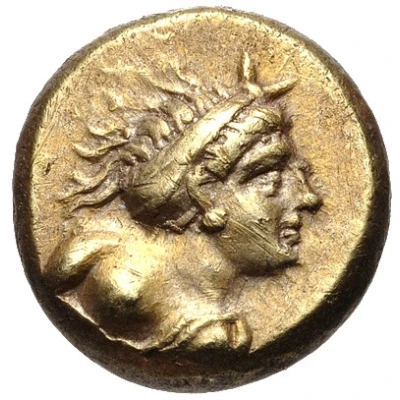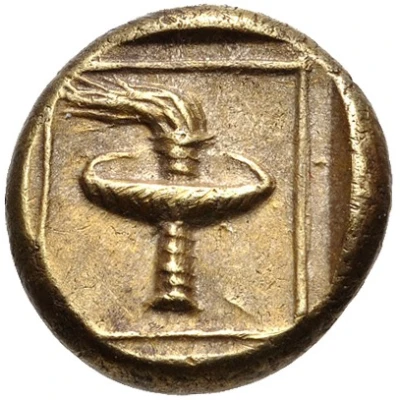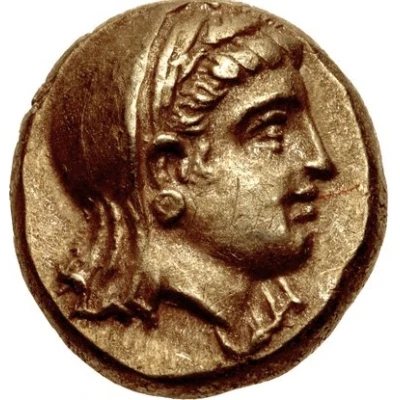
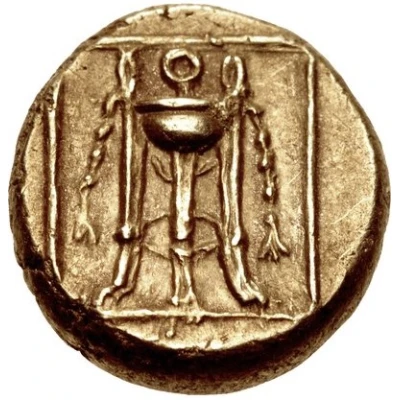

© Classical Numismatic Group, Inc.
Hekte 377 BC - 326 BC
| Electrum | 2.53 g | 10.5 mm |
| Issuer | Mytilene (Lesbos) |
|---|---|
| Type | Standard circulation coin |
| Years | 377 BC - 326 BC |
| Value | Hekte (14⁄3) |
| Currency | Drachm |
| Composition | Electrum |
| Weight | 2.53 g |
| Diameter | 10.5 mm |
| Shape | Round (irregular) |
| Technique | Hammered, Incuse |
| Demonetized | Yes |
| Updated | 2024-10-10 |
| Numista | N#168823 |
|---|---|
| Rarity index | 97% |
Reverse
Tripod tied with fillet within linear square.
Comment
Pozzi 2335; Bement 1429; Traité II 2224.
Interesting fact
The Hekte coin was used as a form of currency in the ancient Greek city-state of Mytilene on the island of Lesbos. It was made of electrum, a naturally occurring alloy of gold and silver, and weighed 2.53 grams. Despite its small size, the Hekte coin played an important role in the economy of Mytilene, as it was used to purchase everyday goods and services. Its design featured an image of a lion's head, which was a symbol of strength and power in ancient Greek culture. Today, the Hekte coin is a valuable collector's item and a reminder of the rich history and culture of ancient Greece.
Price
| Date | Mintage | VG | F | VF | XF | AU | UNC |
|---|---|---|---|---|---|---|---|
| ND (377 BC - 326 BC) | - | - | - | - | - | - |
Values in the table are based on evaluations by sales realized on Internet platforms. They serve as an indication only for Hekte (377 BC - 326 BC) coin.
